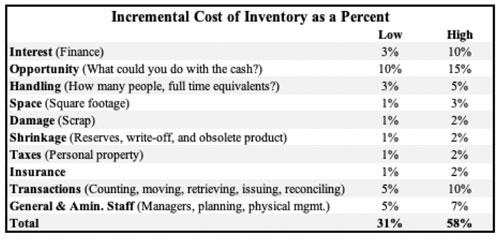Is Just in Time Broken?
April 22, 2020
In the last couple of months, we have gone to grocery stores and pharmacies only to find empty shelves where the toilet paper, paper towels, antibiotics, cleaning supplies and hand sanitizer used to be.
Let’s take a moment to discuss supply chain as it applies to the retail industry. For non-perishable goods, canned foods and dry-goods, the only use of JIT in the retail sector is from the distribution center to the store location. From manufacturing to distribution centers, is traditional “push”, manufacturing utilizing highly sophisticated forecasting / demand planning, or just-in-case inventories. When digging deeper into the outages occurring today, the demand variability of these items is extremely low; meaning their demand is highly predictable. What we are experiencing is a once in a 100-year event! No demand planning / forecasting system is capable of predicting this type of event or crisis. If demand planning processes were able to forecast this event, I guarantee that this kind of knowledge would not be wasted on toilet paper and paper towels! Someone would be using that information to make billions in the stock market or to accurately predict weather patterns. Additionally, push systems are not flexible, responsive or agile enough to quickly pivot for sudden demand changes.
So why are we out of toilet paper and paper towels? Let’s ask the question a different way. Are YOU out of toilet paper at HOME? Very few people actually are, and likely not more than would be under normal circumstances. Why are the store shelves empty? Since COVID-19 is a respiratory disease, long-term toilet paper demand will be unchanged. With no long-term significant demand changes for these goods, manufacturers are reluctant to spend over-time money on already thin profit margin products, only to see in-store demand drop once the pandemic fear subsides. With this false demand, if manufactures were to make more of these products, technically they would be over-producing at a higher cost, which would cause long-term financial distress.
As for antibiotics, cleaning supplies and hand sanitizers, for the most part the U.S. no longer makes these products or the antibiotics that go into them. The last U.S. penicillin factory closed in 2004, and +85% of all generic drugs and their precursor production was shipped off-shore to China and/or India. This had dramatic negative impact to the length of the supply chain, what should have been two weeks is now + 12 weeks. I just published my April newsletter titled, The Economic Colonization of American Health Care Supply Chain, that discusses the impacts to our national security and sovereignty of manufacturing overseas and how it negatively impacts supply chains.
For many products, the supply chain starts or begins from half-way around the world. When a product is shipped thousands of miles, there is nothing Just-In-Time about it! The longer the supply chain, the lower the flexibility and responsiveness to meet consumer changes, and the higher total cost of ownership. A large contributor to the total cost or ownership is inventory carry cost. Total inventory carry cost is typically between 31 and 58% of Cost of Goods Sold. This builds the case for implementing shorter supply chains. Shorter supply chains translate to shorter lead-times; increased flexibility and responsiveness, and lower total cost of ownership, all of which are better for the consumer.

Is it time to rethink JIT? YES! We need more JIT! We need to shorten supply chains and manufacture the product regionally or locally. Shorter supply chains equate to reduced lead-times, increased delivery speed, flexibility and responsiveness, improved quality and total cost of ownership. JIT has my vote!
Categorized in: Art Koch Profit Chain® Tips
Tags: , JIT, JustInTime
